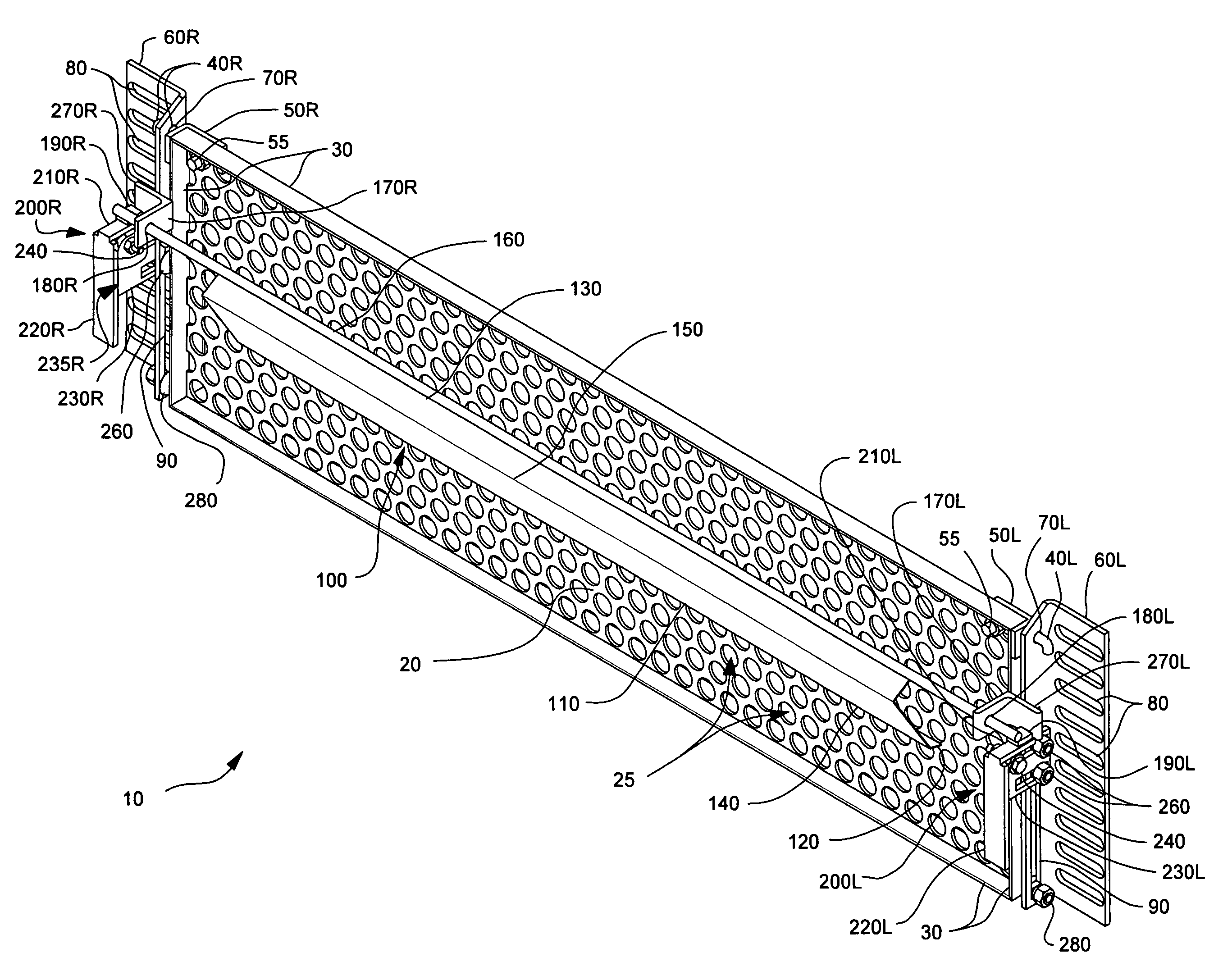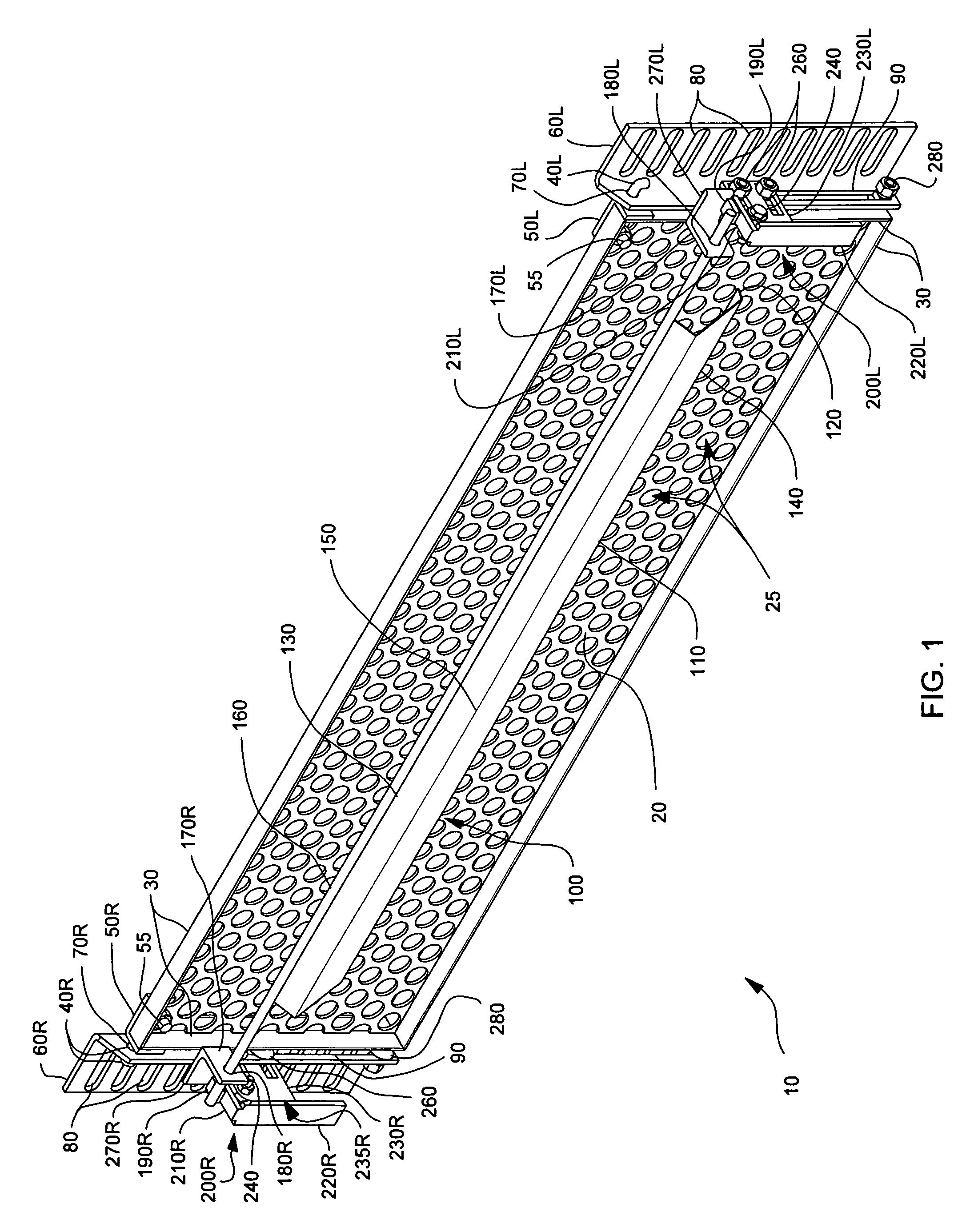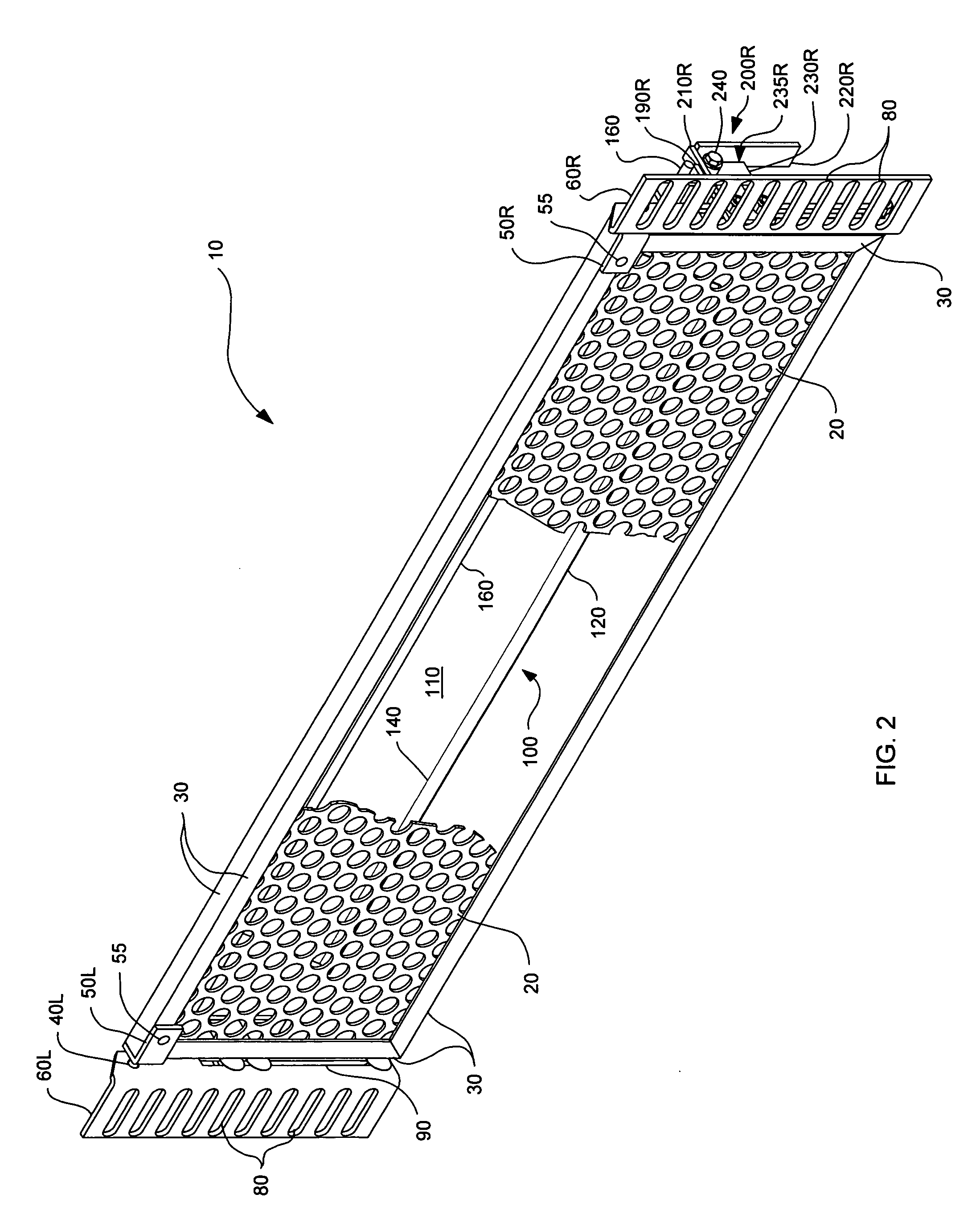Automatic fluid channel screen lock-unlock system
a technology of automatic locking and fluid channel, applied in the direction of separation process, sewage draining, ways, etc., can solve the problems of inability to block some items, many curb inlets have no effective means for blocking the entry of trash, maintenance personnel are under extreme pressure to mount an intensive and expensive effort to remove the blocking device, etc., to enhance the rigidity
- Summary
- Abstract
- Description
- Claims
- Application Information
AI Technical Summary
Benefits of technology
Problems solved by technology
Method used
Image
Examples
Embodiment Construction
[0041]As used herein, unless expressly stated otherwise, the following terms have the definitions referred to or specified in this paragraph. The term “embodiment” means embodiment of the present invention. The term “trash” has the meaning given to it in the BACKGROUND OF THE INVENTION section, with the predetermined size being whatever size of trash the user of the screen wishes to specify for being blocked from passing to the downstream side of the closed installed screen (with due consideration to the fact that some trash that is non-rigid or that has a dimension smaller than the predetermined size might not be blocked). The terms “left” and “right” are intended to mean such directions as viewed from the upstream side of the blocker. The term “front” means the upstream side and the term “back” means the downstream side. The terms “vertical” and “horizontal” are intended to include directions that are substantially vertical and substantially horizontal, respectively. The term “pre...
PUM
| Property | Measurement | Unit |
|---|---|---|
| angle | aaaaa | aaaaa |
| threshold release angle | aaaaa | aaaaa |
| pressure | aaaaa | aaaaa |
Abstract
Description
Claims
Application Information
 Login to View More
Login to View More - R&D
- Intellectual Property
- Life Sciences
- Materials
- Tech Scout
- Unparalleled Data Quality
- Higher Quality Content
- 60% Fewer Hallucinations
Browse by: Latest US Patents, China's latest patents, Technical Efficacy Thesaurus, Application Domain, Technology Topic, Popular Technical Reports.
© 2025 PatSnap. All rights reserved.Legal|Privacy policy|Modern Slavery Act Transparency Statement|Sitemap|About US| Contact US: help@patsnap.com



